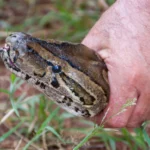In today’s world, finding sustainable solutions to everyday challenges is crucial for protecting our environment and promoting a greener future. Eco-friendly pest control methods offer an effective way to manage pests without relying on harmful chemicals. At Good Life Pest Solutions, a leading pest control company, we believe in providing effective pest management while prioritizing the well-being of our customers and the environment. Here’s how you can achieve a pest-free home using environmentally responsible techniques.
Integrated Pest Management (IPM)
Integrated Pest Management (IPM) is one of the most effective and eco-friendly approaches to pest control. This holistic strategy emphasizes prevention and combines multiple pest management techniques while minimizing environmental impact. IPM involves:
- Inspection and Monitoring: Accurately identifying pest issues.
- Preventive Measures: Sealing entry points and eliminating food and water sources.
- Targeted Treatments: Using traps, baits, or botanical insecticides to address specific pest problems.
- Regular Follow-Ups: Assessing the success of methods and adjusting treatments as necessary.
Natural Repellents and Pesticides
Utilizing natural repellents and pesticides is another eco-friendly option to keep pests at bay. Many common household items can serve as natural deterrents due to their strong scents or tastes. For example:
- Peppermint Oil: Deters spiders and ants. Dilute with water and spray around entry points and affected areas.
- Vinegar: A mixture of vinegar and water can repel ants and other insects. Spray in prevalent pest areas.
- Citrus Peels: The scent of citrus repels spiders and ants. Place peels near entryways or in cabinets.
- Essential Oils: Lavender, eucalyptus, and tea tree oil act as natural repellents for various pests.
Biological Control Methods
Biological control methods utilize natural predators, parasites, or pathogens to control pest populations. Introducing these organisms into the ecosystem helps regulate pests without harmful chemicals. Examples include:
- Ladybugs: Release ladybugs into your garden to control aphid populations naturally.
- Nematodes: These microscopic organisms can be applied to the soil to target and control pests like grubs and termites.
- Bacillus thuringiensis (Bt): A naturally occurring bacteria that specifically targets certain insect larvae, such as mosquitoes, caterpillars, and beetles.
Physical and Mechanical Controls
Implementing physical and mechanical controls is a proactive and eco-friendly approach to pest control. By preventing pests from entering your home or capturing them without harmful chemicals, you can maintain a pest-free environment. Examples include:
- Install Door Sweeps and Screens: Sealing gaps and installing screens on windows and doors prevent pests from entering your home.
- Sticky Traps: Non-toxic adhesive traps capture crawling insects, such as cockroaches or silverfish.
- Light Traps: Installing light traps can attract flying insects like mosquitoes and moths, reducing their presence indoors.
Additional Tips for Eco-Friendly Pest Control
Pest-Repellent Spray
Household spices can act as natural deterrents due to their strong aromatics. Mix one teaspoon of your chosen spice (e.g., cinnamon, cayenne, paprika, cloves) with a cup of water in a spray bottle and apply to areas where pests enter, like window sills and door frames.
Food Waste as a Pest Repellent
Repurpose food scraps to keep pests at bay. Citrus peels, such as lemon or orange, have a strong scent that repels insects like ants and spiders. Coffee grounds can be sprinkled around plants to deter slugs and snails.
FAQ: Eco-Friendly Pest Control Methods
What is the most environmentally friendly method for controlling pests?
The most environmentally friendly method is Integrated Pest Management (IPM), which combines multiple techniques and emphasizes prevention.
Is there such a thing as non-toxic pest control?
Yes, non-toxic pest control includes natural repellents, biological control methods, and physical barriers.
What approach to pest control is the most efficient and environmentally safe?
Integrated Pest Management (IPM) is the most efficient and environmentally safe approach, as it minimizes chemical use and focuses on sustainable practices.
By adopting eco-friendly pest control methods, you can protect both your home and the environment. Integrated Pest Management, natural repellents, biological control, and physical barriers are effective alternatives to traditional chemical-based approaches. At Good Life Pest Solutions, we are dedicated to providing sustainable pest control. For more information or assistance, visit our website or call our phone numbers. Our team is committed to ensuring your home remains pest-free while promoting a healthier, greener planet.

